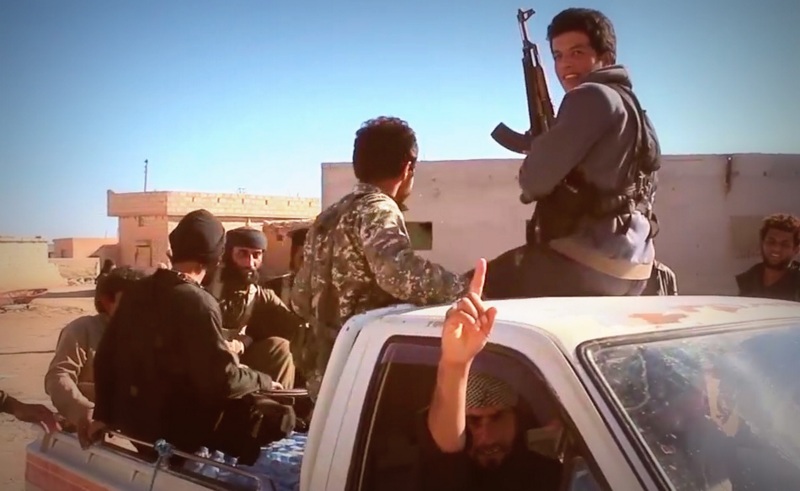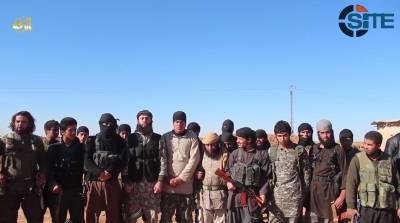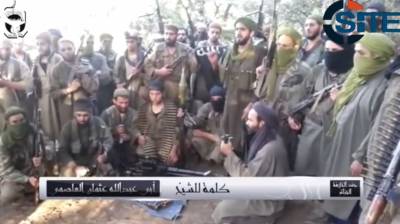A Contrarian View: Has the Islamic State Peaked?

Having spent several posts discussing the threat offered by the Islamic State (IS), it seems appropriate to balance these views with a look at the signs that suggest the group is facing difficulties in its attempts to expand further.
This might seem counterintuitive. After all, during the past month alone, IS executed another American citizen, publicized oaths of fealty from supporters around the world, and carried out a fresh assault on villages near Ramadi, Iraq. But there are also indications that the group is facing serious challenges in both the region and on a global basis.
In fact, on a worldwide scale, IS has not been able to expand as experts once feared they would, leaving open the question of whether the group is capable of dominating the global jihad.
In Iraq, government security forces, tribal fighters, and Kurdish forces have been making good progress against IS. In Syria, the IS offensive against Kobani first stalled and then was pushed back by the Kurds; there have been news reports that suggest all is not well for IS in some of its strongholds, including its “capital” of Raqqa; and the oaths of fealty promoted by the group last week are not as significant as they might seem on the surface. In fact, on a worldwide scale, IS has not been able to expand as experts once feared they would, leaving open the question of whether the group is capable of dominating the global jihad.
First, the situation inside Iraq: despite the gains made by IS, including the seizure of Hit, Anbar in October, Kurdish Peshmerga, Iraqi security forces, and tribal fighters have been steadily pushing back IS territory throughout the country. The attack by IS on Ramadi is a good example. IS militants carried out a multipronged assault on the city, seizing one village and capturing some neighborhoods inside Ramadi itself. Iraqi security forces responded with an immediate offensive that retook the lost territory and repelled IS from the area. Meanwhile, an offensive around Hit by Iraqi forces took back a series of villages and recaptured Camp Hit from IS, setting the stage for further advances. News reports suggest that the atrocities carried out against the residents of Hit (discussed here), rather than intimidating Anbaris, have angered local tribes and encouraged them to work with the Iraqi government to fight IS.
Elsewhere in Iraq, IS has suffered even greater losses. In the Salah-al-Din province this month, Iraqi forces and militia fighters retook the town of Bayji (near the vital oil refinery, which never fell to IS) and Kurdish forces recaptured several villages near the city of Hawija. Even earlier, the mainly Turkmen city of Tuz Khurmatu was retaken, although it is unclear if all the villages in Tuz district have been cleared of IS fighters. Kurdish forces, with some Iraqi aid, had also taken Sulayman Bek (an important city near Tuz Khurmatu) in September. The Kurds have done just as well in Diyala province, capturing from IS a series of nine villages just this week as well as two large towns near the border with Iran. South of Baghdad, the important city of Jurf al-Sakhar was reclaimed from IS, while in the north, the Peshmerga are preparing an offensive to take back the rest of Sinjar.
 Meanwhile, the only major offensive by IS in Syria, against the border city of Kobani, has been stopped and some of the gains made by IS have been reversed by Kurdish fighters and U.S. airstrikes. Rather than giving up on this strategically unimportant city, IS has decided to reinforce their offensive and just this week poured even more forces into the assault.
Meanwhile, the only major offensive by IS in Syria, against the border city of Kobani, has been stopped and some of the gains made by IS have been reversed by Kurdish fighters and U.S. airstrikes. Rather than giving up on this strategically unimportant city, IS has decided to reinforce their offensive and just this week poured even more forces into the assault.
Perhaps as a result of these reverses, the brutality shown by al-Baghdadi’s group, or the U.S. strikes on IS leadership, there are news reports of serious dissension and even fighting between the various factions that make up IS. Just last week, a newspaper reported on a growing split within IS over the massacre of tribesmen and the recent military setbacks suffered by the group. The revolt was apparently led by members of IS who were once part of Abu Musab al-Zarqawi’s organization (al-Qaeda in Iraq or AQI), joined by fighters from Iraq, Jordan, and Saudi Arabia. The execution by IS of several members of its own group in al-Qa’im, Iraq, shows that there are indeed internal tensions within the organization.
Fighting that broke out in Raqqa, Syria is even more indicative of problems with dissension. The clashes were apparently between militants returning from the Iraq battlefield and foreign fighters who had taken up residence in the houses left vacant by the absent militants. The infighting led to at least six deaths and sniping incidents around the city, calling into question the cohesion of the group as a whole.
 Furthermore, the recent spat of groups joining IS, a supposed triumph for IS, needs to be somewhat caveated. Some of the oaths were from groups that had already sworn bay’ah (an oath of fealty) to Abu Bakr al-Baghdadi, the head of IS. This includes Jund al-Khilafah in Algeria, who reaffirmed their oath three times in just two months. Another group that swore bay’ah consisted of just six former members of Tehrik-e-Taliban in Pakistan. Two groups of “mujahidin” in Yemen and Saudi Arabia swore bay’ah in audio statements, and thus conveniently hid their size, but it is significant that al-Qaeda in the Arabian Peninsula (AQAP) was quick to rebuke IS and reaffirm its oaths to Zawahiri. This suggests that the majority of its fighters remain loyal to al-Qaeda. Even the most important of the oaths, from Ansar Bayt al-Maqdis (ABM), a group operating in Egypt, might not be quite as significant as first thought. According to news reports, the group is split between a faction in Sinai that supported unity with IS and a Nile-based faction that did not. This might explain why the group chose to rename itself “Wilayat Sinai” or “Sinai Province” when it joined IS rather than “Egyptian Province.”
Furthermore, the recent spat of groups joining IS, a supposed triumph for IS, needs to be somewhat caveated. Some of the oaths were from groups that had already sworn bay’ah (an oath of fealty) to Abu Bakr al-Baghdadi, the head of IS. This includes Jund al-Khilafah in Algeria, who reaffirmed their oath three times in just two months. Another group that swore bay’ah consisted of just six former members of Tehrik-e-Taliban in Pakistan. Two groups of “mujahidin” in Yemen and Saudi Arabia swore bay’ah in audio statements, and thus conveniently hid their size, but it is significant that al-Qaeda in the Arabian Peninsula (AQAP) was quick to rebuke IS and reaffirm its oaths to Zawahiri. This suggests that the majority of its fighters remain loyal to al-Qaeda. Even the most important of the oaths, from Ansar Bayt al-Maqdis (ABM), a group operating in Egypt, might not be quite as significant as first thought. According to news reports, the group is split between a faction in Sinai that supported unity with IS and a Nile-based faction that did not. This might explain why the group chose to rename itself “Wilayat Sinai” or “Sinai Province” when it joined IS rather than “Egyptian Province.”
All these developments suggest that the undoubted successes of IS need to be balanced with the group’s failures. They also indicate that the countermoves by the U.S. and our partners are having some good effect. While it is certainly too much to argue IS is defeated or even on a sure pathway to defeat, the group is not the unstoppable military machine that some feared it was this past summer.
